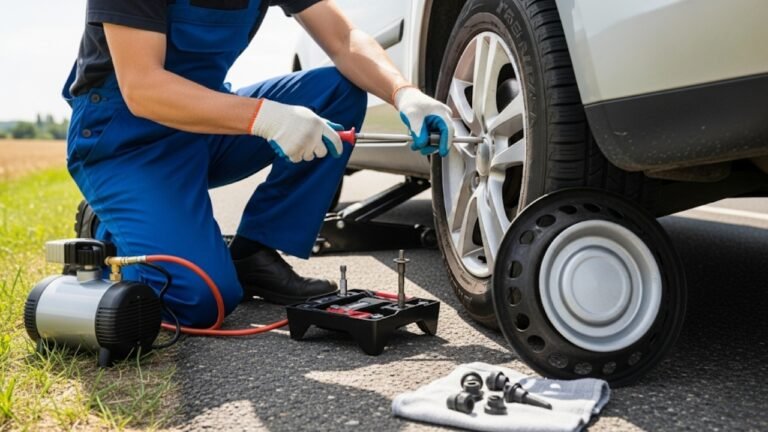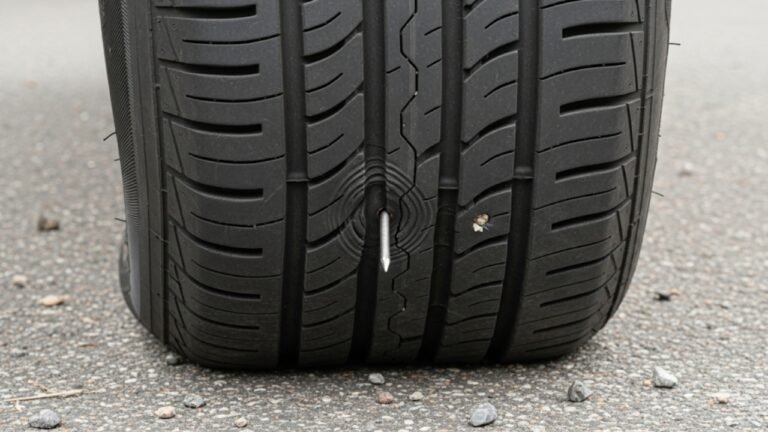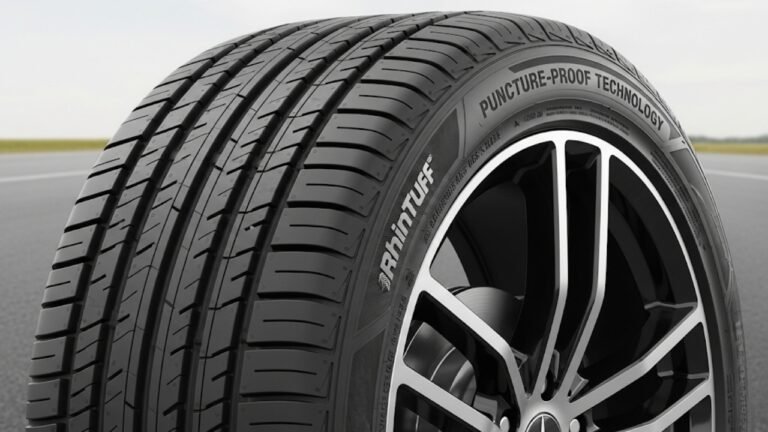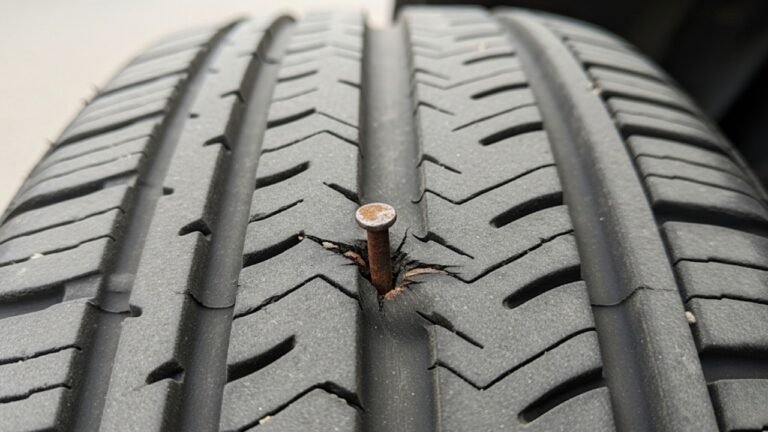Why Is My Car Tyre Deflated But No Puncture?
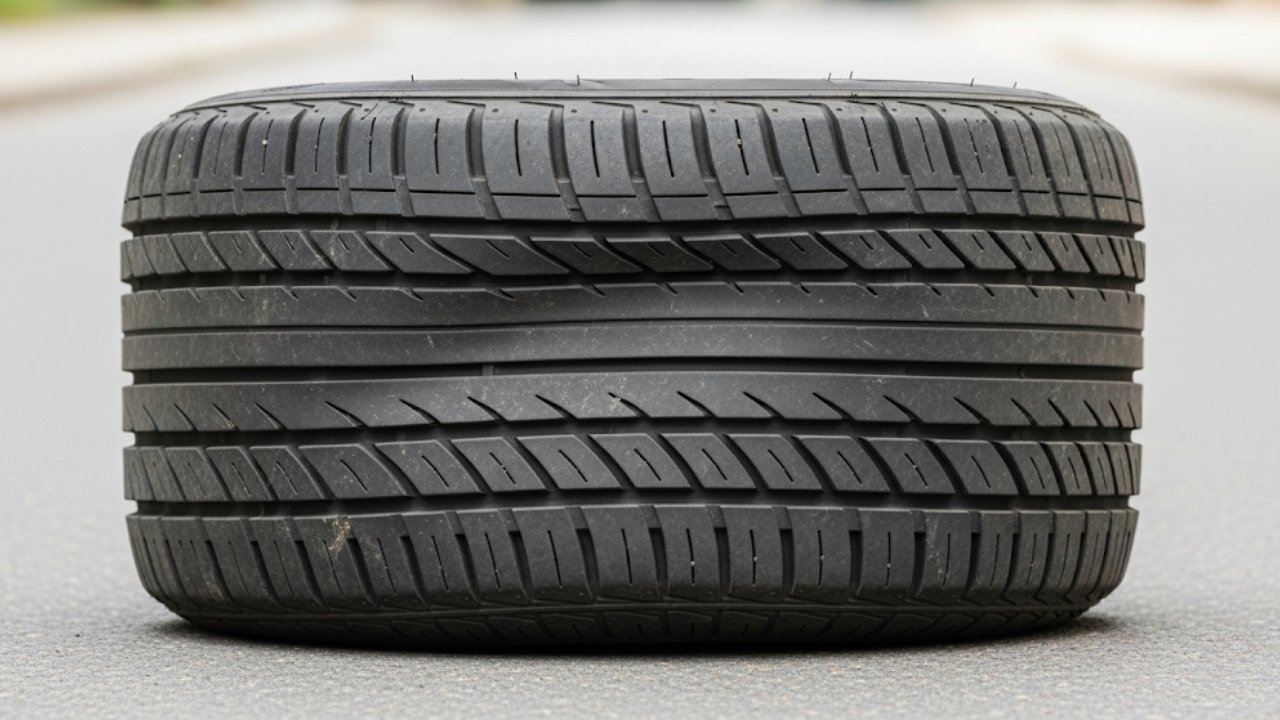
You’re ready for work, bag slung over your shoulder, and just as you walk toward your car, you spot it—the dreaded sag of a car tyre deflated but no puncture in sight. Your heart sinks. There’s no nail. No sharp object. No hissing sound. But the tyre still looks tired and droopy.
This isn’t just your story. It’s something many car owners face, especially during season changes or after a long drive. What gives? Why does your car tyre go flat without a puncture? Is it a technical issue or just bad luck?
Let’s unravel this mystery together. I’ll walk you through personal stories, real causes, and simple checks that can save you time, money, and frustration.
Common Reasons Why Your Car Tyre Deflated But No Puncture
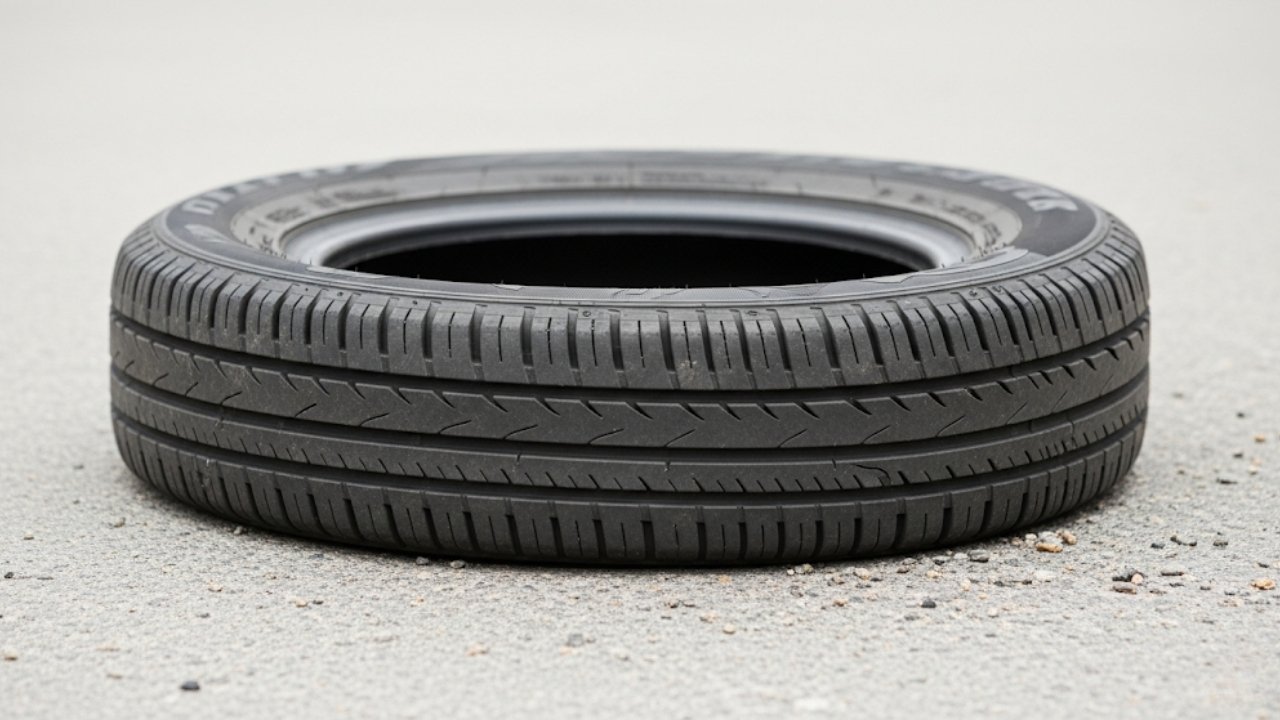
1. Temperature Drops and Seasonal Changes
Ever notice how your tyres act up during winter mornings? That’s no coincidence.
When the temperature drops, air condenses. This leads to reduced pressure inside your tyres—even without a puncture.
Here’s a quick metaphor: Imagine a balloon left outside overnight. It looks deflated in the morning—not because it popped, but because cold air took the bounce out of it.
This is exactly what happens to your car tyre.
-
Cold weather can reduce tyre pressure by 1-2 PSI for every 10°F drop.
-
It’s more common in early mornings or during sudden weather changes.
Tip: Always check tyre pressure after a cold night. A simple refill at a nearby gas station may solve the issue.
2. Valve Stem Leaks – The Silent Offender
One time, I spent an entire weekend searching for a puncture that didn’t exist. Turns out, it was the valve stem—that little nozzle where you inflate your tyre.
Over time, the rubber in the valve can crack or harden. This allows air to leak slowly, often too slow to hear or feel.
What causes valve stem issues?
-
Age and wear
-
Dirt or corrosion
-
Improper installation or previous repairs
Even a brand-new tyre can go soft if the valve is damaged.
Quick check: Pour soapy water on the valve. If bubbles appear, it’s leaking!
3. Bead Seal Leaks – When Air Escapes the Rim
This one’s sneaky. The bead is the edge of your tyre that seals against the rim. If there’s corrosion, rust, or even a bit of dirt, it may leak air slowly.
Think of it like an unsealed jar lid—it looks closed, but air still escapes.
Typical causes:
-
Rust on the inner wheel rim
-
Debris caught between rim and tyre
-
Improper mounting
This issue is common in older cars or alloy wheels. A tyre shop can clean and reseal it easily.
4. Rim Damage – Bent But Not Broken
If you’ve ever hit a pothole hard—maybe while jamming to music and not watching the road—it could bend the rim.
A bent rim creates gaps between the tyre and wheel, causing slow air leaks.
Look for:
-
Visible dents or scratches near the edge of the rim
-
Wobbling sensation while driving
-
Repeated pressure loss despite topping up
While it’s not a flat-out emergency, you’ll want a technician to inspect and fix it before it worsens.
Table: Quick Comparison of Non-Puncture Causes
| Cause | Description | How to Check | Quick Fix |
|---|---|---|---|
| Cold Weather | Air contracts in low temps | Monitor PSI readings | Refill air as needed |
| Valve Stem Leak | Rubber nozzle wears over time | Soapy water test | Replace the valve |
| Bead Seal Leak | Improper seal between rim and tyre | Professional check | Reseal bead |
| Rim Damage | Pothole or curb hit causes air gaps | Visual & ride feel | Repair or replace rim |
5. Tyre Aging – The Rubber Truth
Tyres age, just like we do. Over time, even if there are no visible punctures, the rubber begins to dry out and crack.
I had a set of tyres on my old Honda that looked fine. But they kept losing pressure. Eventually, the mechanic pointed out tiny cracks all over the sidewall—called dry rot.
What causes tyre aging?
-
UV exposure
-
Long periods of inactivity
-
High heat and humidity
Rule of thumb: Replace tyres every 6 years, regardless of tread wear.
6. Slow Leak from a Previous Puncture Repair
Sometimes, a past repair (like a plug or patch) isn’t holding up. If the seal wasn’t perfect, air could still escape slowly.
It’s frustrating, right? You fixed the issue once—and yet, it creeps back. That’s why I always recommend patching from the inside, not just using a plug.
What To Do When You See A Car Tyre Deflated But No Puncture
Now that you know the “why,” let’s focus on the “what next.”
Here’s what you should do:
✅ Step-by-Step Action Plan
-
Visually inspect the tyre – Look for cracks, bulges, or sidewall damage.
-
Check tyre pressure – Use a reliable gauge, ideally before driving.
-
Add air if needed – Inflate it to manufacturer specs (usually on driver door sticker).
-
Use soapy water – Spray the valve, bead, and tread to find hidden leaks.
-
Monitor pressure – Check again after 24–48 hours.
-
Visit a tyre shop – If the issue persists, get a full diagnostic.
️ Tools You’ll Want Handy
-
Digital tyre pressure gauge
-
Portable air compressor
-
Spray bottle with soap solution
-
Flashlight for inspection
These tools have saved me countless trips to the service center.
Emotional Frustration: I’ve Been There Too
I’ll be honest—there’s nothing worse than that moment of doubt. Is it safe to drive? Will it go flat again tomorrow? It messes with your peace of mind.
It happened to me once before a weekend trip. I topped up the air, hoped for the best, and still found it flat again in the morning. That’s when I learned to trust my instincts and get help early. Ignoring it doesn’t make it go away—it just delays the solution.
Hidden Culprits: More Reasons Why Your Car Tyre Deflated But No Puncture
While we’ve already covered the main suspects, there are a few lesser-known causes that can still lead to slow tyre deflation without an obvious puncture.
7. Tyre Bead Seating Issue After Mounting
If your tyre was recently replaced or rotated, there’s a chance the bead didn’t seat properly on the rim. This means the tyre isn’t fully locked into place, allowing slow air leaks around the edge.
This problem usually shows up:
-
After a tyre change or patch
-
When low-quality or worn-out rims are used
-
With improper mounting tools
Mechanics sometimes rush the process, especially in busy garages. I once had this happen after a roadside puncture repair. The mobile guy fixed it fast—but didn’t seat the tyre right. It kept losing pressure for days.
Always go to a trusted, certified tyre technician when fitting new tyres.
8. Tyre Pressure Monitoring System (TPMS) Glitch
Here’s a curveball: What if your tyre isn’t actually losing air, but your car THINKS it is?
TPMS sensors can sometimes send false alerts. These systems rely on small sensors inside each tyre that read pressure levels. If they malfunction, they might signal a flat tyre even if it’s fully inflated.
How to verify:
-
Check the tyre pressure manually with a gauge.
-
If the pressure is fine, it might be the sensor.
-
Reset the TPMS or visit a technician for recalibration.
It’s rare, but it happens. And it can be really confusing if you’re not aware of it.
Long-Term Fixes and Prevention Tips
Let’s talk solutions. You’ve dealt with the frustration. Now how do you stop it from happening again?
Here are some easy, proactive steps to prevent future tyre deflation without punctures.
Regular Pressure Checks – More Than Just a Good Habit
Check tyre pressure at least once every two weeks, and always before long drives. Use a digital pressure gauge for accuracy.
This habit saved me during a road trip through hilly terrain. I caught a slow leak early and avoided a roadside headache in the middle of nowhere.
☀️ Store Your Vehicle Properly
If your car is parked long-term, especially outdoors:
-
Use tyre covers to protect from UV rays.
-
Avoid parking on dirt or grass—moisture speeds up rubber aging.
-
Move the vehicle occasionally to avoid flat spots.
Tyres deflate faster when neglected, even without any physical damage.
Rotate and Inspect Your Tyres
Rotating tyres every 5,000–8,000 miles helps them wear evenly. During rotations, ask your mechanic to inspect:
-
Valve stems
-
Rim condition
-
Sidewalls for cracking
An extra 10 minutes could save you hundreds later.
Cultural Tip: How Tyre Habits Differ Globally
I’ve lived in both warm and cold climates, and the approach to tyres varies more than you’d think.
In colder countries, drivers are trained to expect winter pressure drops. In hot, tropical climates, heat causes over-expansion, which often leads to bursts or dry rot instead of deflation.
In places like Bangladesh or Southeast Asia, where monsoons and muddy roads are common, improper storage and bead seal issues are frequent. Whereas in Europe, seasonal tyre swaps often lead to valve stem errors or improper re-mounting.
Understanding your local climate can help tailor your prevention strategies.
Emotional Angle: It’s Okay To Not Know Everything
Let’s be honest: car maintenance can feel overwhelming. You’re not expected to know everything about tyres, valves, rims, or TPMS sensors.
I remember feeling totally lost the first time my car tyre deflated but no puncture showed up. I checked the tread like I was Sherlock Holmes but missed the leaking valve entirely. It took me two trips to the garage and a lot of Googling to figure it out.
It’s okay to ask for help. Cars are complex. You’re not alone in this.
Quick Recap: What To Do If Your Car Tyre Deflated But No Puncture
Here’s a bullet-point summary to remember and maybe even save for later:
-
✅ Check tyre pressure manually (don’t trust TPMS alone)
-
Use soap-water test on valve and bead
-
Inspect for rim dents and dry rot
-
Rotate and reseat tyres professionally
-
Carry a portable compressor for emergencies
-
Visit a tyre shop if unsure—some leaks need pro tools
Bonus Tip: Add Tyre Sealant for Peace of Mind
If you live in a remote area or often drive alone, consider tyre sealant products. They coat the inside of your tyre and automatically seal small leaks as they occur.
Brands like Slime or Fix-a-Flat are decent short-term solutions, especially for slow leaks due to minor bead or valve issues.
Just remember: they’re not permanent fixes. Think of them like a first-aid kit—not a full surgery.
Why Your Tyre Health Matters More Than You Think
Let’s close with this thought.
A tyre may seem like just rubber and air—but it’s your connection to the road. One bad tyre can lead to:
-
Reduced braking efficiency
-
Lower fuel economy
-
Dangerous blowouts at high speed
If your car tyre deflated but no puncture is visible, don’t ignore it. Small problems often turn into big ones if left unchecked.
Take a little time today to care for your tyres. Your future self—and your wallet—will thank you.
FAQs – When Your Car Tyre Deflated But No Puncture Appears
Here are some questions I get asked often:
Q1. Can I still drive with a slightly deflated tyre?
A: If it’s just 1-2 PSI low, yes. But anything more, and it affects safety, fuel economy, and handling.
Q2. How long does a valve stem last?
A: Usually 5–8 years. But weather, road conditions, and usage can shorten its life.
Q3. Can tyre sealants fix slow leaks?
A: Temporary, yes. But always see a mechanic for a proper fix.
Q4. Do run-flat tyres behave the same way?
A: They can lose pressure too—but they’re designed to keep going for 50–100 miles.
Q5. Should I rotate or replace tyres after repeated deflation?
A: Depends on the cause. If wear is uneven or rubber is aged, replacement is safer.
Q6. Can tyre deflation happen overnight?
A: Yes. Sudden temperature drops or slow leaks can cause tyres to deflate while your car is parked.
Q7. What PSI is too low for driving?
A: Anything below 25 PSI is risky. Most cars need around 32–35 PSI, depending on the model.
Q8. How much air loss is normal per month?
A: Around 1–2 PSI per month is normal. More than that signals a problem.


